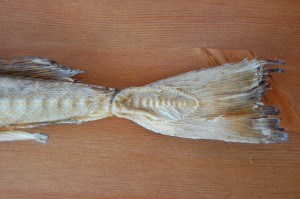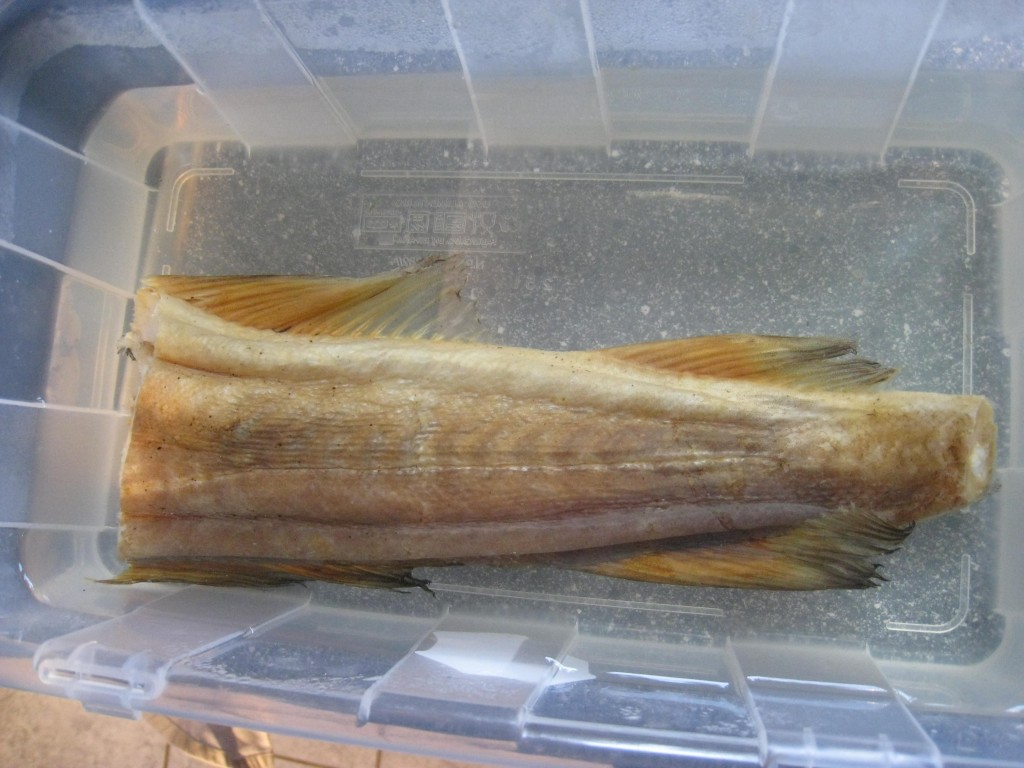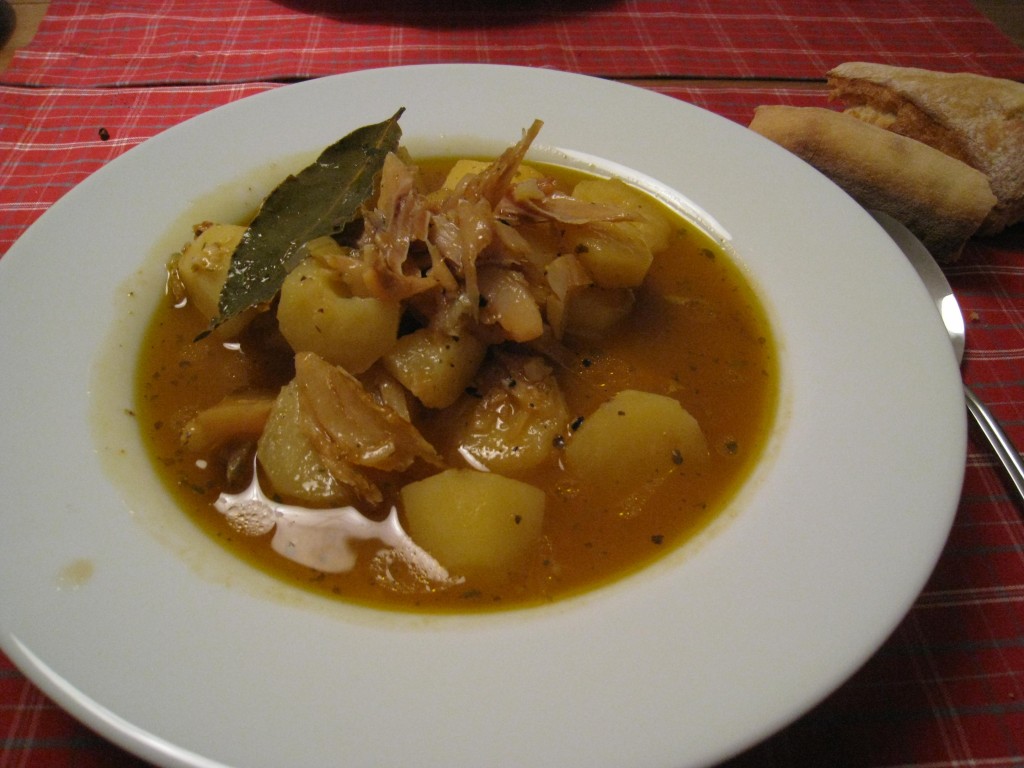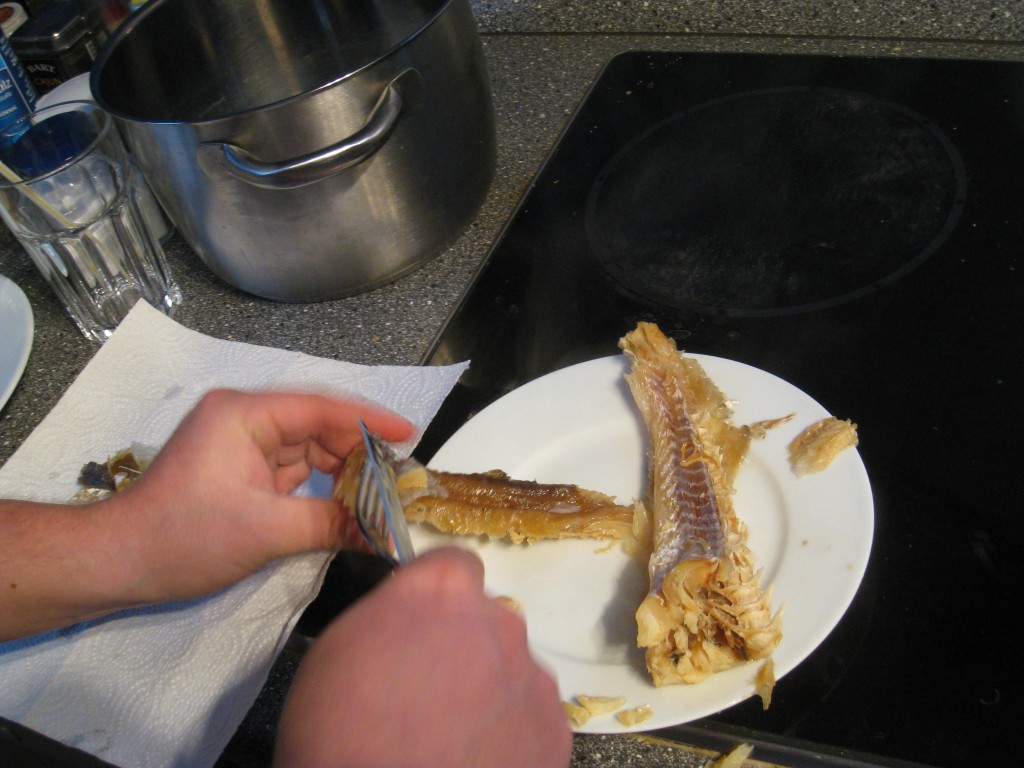 Bakalar is dried cod and is most definitely not to be confused with Lutefisk- the gelatinous stinky white fish that my Scandinavian family recall from the all-white Christmas smorgasbord of childhood. Bakalar is the Croatian name for the dried white fish that is imported from the Nordic region and is very popular in Croatia. It is also a traditional Christmas Eve dinner on the Dalmatian coast, where Miljan is from. Bakalar (or Klippfisk) is treated with lye and then becomes Lutefisk, but it’s not quite the same thing.
Bakalar is dried cod and is most definitely not to be confused with Lutefisk- the gelatinous stinky white fish that my Scandinavian family recall from the all-white Christmas smorgasbord of childhood. Bakalar is the Croatian name for the dried white fish that is imported from the Nordic region and is very popular in Croatia. It is also a traditional Christmas Eve dinner on the Dalmatian coast, where Miljan is from. Bakalar (or Klippfisk) is treated with lye and then becomes Lutefisk, but it’s not quite the same thing.
The first time I saw the dried fish hanging on a rack in the market, I certainly didn’t imagine I would (ever) eat such a thing, and I was at a loss of words when I sarcastically remarked “oh yum” and Milo replied “oh yeah, that is delicious.” I wasn’t sure whether or not he was serious. But then I figured out, oh yes, he was quite serious, and I have eaten (and enjoyed!) bakalar numerous times, but this was the first time Milo made it himself.
First, we soaked a piece (about one-third of the fish) in water overnight.  Then we boiled it for 2 hours, and this is where it gets stinky. Despite the cold, we opted to leave a few windows open.
Then we boiled it for 2 hours, and this is where it gets stinky. Despite the cold, we opted to leave a few windows open.
Then he flaked the meat off, and put it back in the pot with some garlic, onion, tomato paste, potato chunks, bay leaf, and oregano. This cooked for about one more hour. 
Delicious- light broth with nice pieces of fish and potato, and finished with olive oil and sea salt. Dobar tek!


Looks delicious! Very different from lutefisk. My grandmother began the lutefisk process three days before Christmas each year. She would buy the salted cod and soak it in lye (!), changing the water each day. On the third day,Christmas Eve, at about 4 in the afternoon, she’d rinse the lutefisk and place it in an enormous pot with fresh water and begin to boil it. The rest of the family would go to church for the Christmas Eve service, and on returning home, the table was set with the good china, the candles were lit in the Swedish candelabra, and the lutefisk would look like a gelatinous glob. Each person would get a spoonful of lutefisk on their plate, along with a few white boiled potatoes and a section of white (I’m not kidding) boiled sausage. If the kids were good and had a taste of everything, we’d be allowed to open one Christmas present after the meal. I have to say, the experience of lutefisk bonded us in a way unlike any other. Merry Christmas!
That’s funny, a good bribe to get you to try it-I guess it worked! Did the adults like the taste, or was it just for “tradition’s sake?”
You know, it’s hard to say what the adults were thinking about the taste of Lutefisk. Grandmother Lidren seemed to relish it; it must have tasted like her childhood Christmas feasts. My mother, your grandmother, wanted to please her own mother and to give the kids an experience of a traditional Swedish Christmas Dinner. Despite our grousing about it, I think we are grateful that lutefisk is part of our Christmas memories. (Isn’t it interesting that when I think of my 60 year old brothers and myself as a group, it think of us as “the kids”?)
Pingback: Bakalar na bijelo | olive oil and sea salt